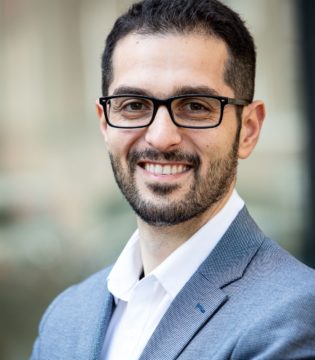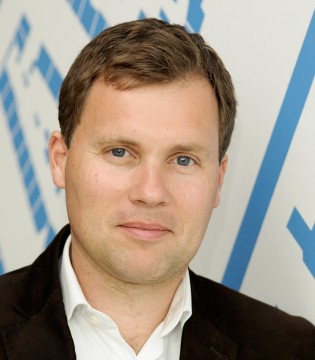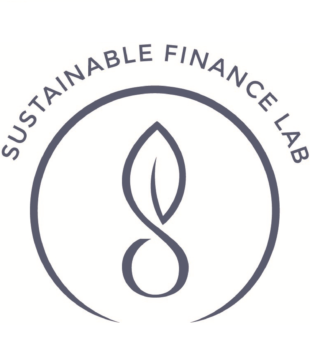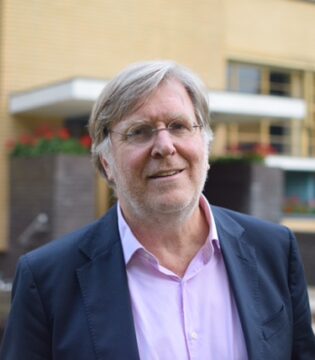Last weekend a right-wing coalition led by former fascist Giorgia Meloni won the elections in Italy. Europe braces nervously for yet another problem in what already is a complicated time. Will a new Meloni government continue to live up to the economic reform promises made by its predecessor Draghi? Or will it risk losing the much needed 200 billion Euro of recovery funds from the EU’s Recovery and Resilience Facility set up in response to the covid crisis?
Lees verder →Conclusion of project on energy transition climate related risks to the financial sector
After three years, the Sustainable Finance Lab (SFL) concluded its the Energy Transition climate related risks to the financial sector project. The project was coordinated by SFL with stakeholders from both academia and the financial sector: Utrecht University (Pathways to Sustainability hubs and REBO faculty), ABP/APG, Actiam, ING Bank, Rabobank, and the Dutch National Bank (DNB).
Within the framework of the project two versions of the General Equilibrium Model for Sustainable Transitions (GEMST) model were developed. The main contribution of GEMST models to their CGE counterparts is the distinction between green and brown final sub-sectors which allows for capturing both transition risk and opportunities. Moreover, the models envisioned a sector-specific capital stocks, which permits the allocation of new investments based on a sector-specific return/cost of capital. GEMST-1 is a one region model with 6 final sectors and 7 power sectors with a focus on energy related feedback loops between sectors. GEMST-2 is a model with three regions and trade channels between in intermediate and final goods between them, along with 13 final sectors and 7 power sectors in each region. Compared to GEMST-1, GEMST-2 has more detailed production structure capturing the intersectoral dependencies and feedback loops. These models can be used to analyze different market, policy or technological shocks on the transition towards a low carbon economy.
Moreover, project members Moutaz Altaghlibi and Rens van Tilburg were awarded a grant from the International Network for Sustainable Financial Policy Insights, Research and Exchange (INSPIRE) to investigate the impacts of green monetary and supervisory policy scenarios on the energy transition. This task resulted in a report titled: “HOW MUCH OF A HELP IS A GREEN CENTRAL BANKER? Quantifying the impact of green monetary and supervisory policies on the energy transition”. The report was written by Moutaz Altaghlibi, Rens van Tilburg and Mark Sanders. Key messages are:
- Central bank green intervention can substantially accelerate the transition with a climate contribution that amount to 5%-12% of the needed emission reductions.
- The maximum quantitative impact of the intervention is achieved when it targets both green final sub-sectors and renewable power sectors at the same time.
- An intervention that targets renewable sectors only induces spillover effects that could hinder the transition for most final sectors. => Coordination between central bank green intervention and other fiscal climate policies is essential for a timely and cost-effective transition.
- Central banks can play a substantial/significant role in the transition but it should be seen as complementary, supportive, to fiscal and regulatory efforts.
Furthermore, project leader Moutaz Altaghlibi participated in an analysis by the Dutch National Bank (DNB) on “The impact of carbon pricing and a CBAM on EU competitiveness”. This analysis was co-authored with Guido Schotten, Yannick Hemmerlé, Guus Brouwer, and Maurice Bun. Main results are:
- More effective carbon pricing can be implemented without significantly impairing competitiveness in the majority of sectors and countries.
- For the few carbon intensive sectors where production costs do increase significantly, a CBAM should be considered, in line with EC proposals.
- To reduce the threat of retaliation, it is critical to align the CBAM with WTO agreements.
- Temporary compensation measures, such as subsidies for emission reduction, can be considered to limit the negative effect of a carbon tax on certain carbon intensive exporters to non-EU countries.
Furthermore, within the framework of this project a working group of representatives of different stakeholder were formed. The group discussed different relevant transition drivers which then were analyzed using GEMST-1 model. The analysis titled: “General Equilibrium Impacts of Different Drivers of the Energy Transition” were written by Moutaz Altaghlibi. Key messages are:
- An increase in consumer willingness to switch between green and brown options would have a positive effect on the transition towards green sub-sectors.
- Higher efficiency improvements in energy usage by green sectors would induce a positive scale effect on overall output, associated with a temporary increase in emissions and a net positive effect on the transition.
- The effect of higher share of electrification in the production of one sector on the transition depends widely on the relative price levels of different energy sources in the benchmark scenario.
- Higher flexibility in the power infrastructure would have a positive impact on the transition of the electricity intensive Transportation sector, while hindering the transition in other final sectors mainly because of a feedback loop that affect the oil price negatively.
- A targeted sectoral green intervention by the central bank would have a positive effect on the transition in that sector with some negative feedback effects on the transition of other sectors. Moreover, if such intervention targets sectors that are not energy intensive, it may induce an increase in emissions.
In the follow up of this project, project members plan to use GEMST-2 to preform analyses on more international and sectoral based research questions linked to green monetary and supervisory policies, along with initiating new collaborations in this field between academic, policy and professional stakeholders.
Economie gebaat bij schuldhulp aan mkb die eerlijk en duurzaam is
Dit blog verscheen op 27 mei 2021 als een opinieartikel in de Volkskrant.
De Nederlandse samenleving gaat weer open. Dat betekent nog niet dat de overheid zich weer kan terugtrekken. Bij veel burgers en ondernemers zijn de reserves uitgeput. Volgens het IMF dreigt 16 procent van het Europese midden- en klein bedrijf failliet te gaan. In de hardst geraakte sectoren betreft dat zelfs een derde van de ondernemers.
Dat betekent niet alleen veel persoonlijk leed: ondernemers die hun droom in rook zien opgaan en medewerkers die thuis komen te zitten. Het ondermijnt ook de gezondheid van onze samenleving. Met deze ondernemingen verliezen we waardevolle netwerken en kennis. Een groot deel van onze meest creatieve doorzetters raakt ontmoedigd en verstrikt in de schuldhulpverlening. Creatieve doorzetters die juist hard nodig zijn om de samenleving weer op een duurzame wijze op gang te krijgen.
Herstel vereist daarom een snelle verlichting van de coronaschuldenlast. Dit is een gedeelde verantwoordelijkheid. Het coronavirus is niemands ‘schuld’. Het is in ieders belang dat we de tijdelijke tegenslag van het coronavirus niet nog jaren de ontwikkeling van de samenleving laten belemmeren.
Gelukkig lijkt dat besef doorgedrongen tot de Nederlandse politiek. Het demissionaire kabinet heeft een regeling voor bedrijfsschulden aangekondigd. De werkgevers willen een zo breed mogelijke regeling. Oud-minister van Financiën Dijsselbloem lanceerde zelfs het idee om de belastingdienst alle schulden te laten kwijtschelden. Voor zo’n generieke aanpak pleit de eenvoud en daarmee snelheid. Dat is zeker van groot belang. Maar bij zo’n grote ingreep is het belangrijk dat we ook vooruitkijken. Dat deze Nederland weerbaar en veerkrachtig maakt zodat we ook volgende crises aankunnen. Niet alleen met gezonde financiële balansen maar met de juiste ondernemers spirit en plannen. En daar wringt het.
Een volledige kwijtschelding van de belastingschulden straft juist de ondernemers die het hardst geprobeerd hebben de schuldengroei binnen de perken te houden. De ondernemers die op creatieve wijze toch nog wat geld hebben verdiend, die eigen vermogen hadden en daarop hebben ingeteerd. Zij zien hun concurrent nu beloond worden met meer steun. Bij een volgende crisis kijkt iedereen dan enkel nog naar de overheid.
Voor sommige bedrijven stond het er ook voor corona al niet best voor. Voor weer andere bedrijven is, als ze hun businessmodel niet drastisch aanpassen, geen plek meer in de wereld na corona. Dat is een wereld waarin meer thuis wordt gewerkt en waar een flinke inhaalslag gemaakt gaat worden om de Europese doelstellingen voor klimaat en de circulaire economie te behalen.
Het IMF becijferde dat bij een gerichte aanpak met zo’n 4 miljard euro 80% van de levensvatbare ondernemingen gered kan worden. Een generieke aanpak van dezelfde omvang redt maar 20% van deze ondernemingen. Daarom is de keuze voor een gerichte aanpak beter en moeten er eisen aan de hulp worden gesteld.
Hoe ziet zo een aanpak eruit? In de eerste plaats is de overheid zelf aan zet. Zet voor alle ondernemers de belastingschuld om in een langlopende, achtergestelde lening (5 tot 10 jaar) waarover geen rente wordt betaald. Wie versneld aflost, krijgt een bonus.
Wat de overheid niet kan, is bepalen welke bedrijven toekomst hebben. Dat is aan de private financiers, de banken voorop, maar ook participatiemaatschappijen en pensioenfondsen. Zij kennen de ondernemers het best. De ‘Garantie Ondernemingsfinanciering uitbraak coronavirus’ en het uitsmeren van belastingverplichtingen over een langere tijd helpen, maar bieden nog onvoldoende toekomstperspectief.
Daarvoor zullen veel bedrijven de komende jaren flink moeten investeren in het verduurzamen van hun activiteiten. Banken en andere private financiers zijn zich inmiddels bewust van de economische kansen die de duurzaamheidstransities bieden. Het heeft geen zin om activiteiten te financieren die daar niet in passen. Een bedrijfsplan dat is gebaseerd op het dagelijks tien keer naar Brussel vliegen of geen alternatief heeft voor de uitstoot van stikstof en/of andere emissies, past niet meer.
Maar banken en private partijen kunnen niet het gehele risico van deze transitie op zich nemen. Daarom zal ook hier de overheid een deel van het risico moeten dragen voor leningen die aantoonbaar bijdragen aan de energie en circulaire transities.
Voor het maken van grote slagen in de verduurzaming is ook risicodragend kapitaal nodig waarbij de rendementseisen lager zijn en de terugverdientijd langer dan wat voor private partijen mogelijk is. Hier ligt een rol voor een publieke investeerder als InvestNL. Reken InvestNL daarom primair af op de bijdrage die het levert aan de transities, en niet op het behaalde financieel rendement.
Nederlandse banken, verzekeraars en pensioenfondsen hebben zich gecommitteerd aan het Klimaatakkoord. De hersteloperatie waar we nu voor staan, biedt een unieke mogelijkheid om de economie op een eerlijke en duurzame manier weer gezond te maken. Het is aan een nieuw kabinet om dat mogelijk te maken.
Rens van Tilburg (directeur Sustainable Finance Lab aan de Universiteit Utrecht)
Peter Blom (voormalig bestuursvoorzitter Triodos Bank)
The impact of rainforests’ biodiversity loss on Vanguard’s pharmaceutical portfolio
By Melissa Nguyen, Paul Rösler, Adrian Nagy, Georgios Liakopoulos, and Kristof Hamann
Summary of a final paper written as part of the course ’Sustainable Finance’ held by Rients Galema during the summer term 2020 at Utrecht University.
In the mid of a global health crisis, while the whole world is looking to the pharmaceutical industry to find the vaccine for COVID-19, investing into this industry seems more attractive than ever. But is the future of the pharmaceutical industry really so bright? Isn’t there a blind spot from the financial sector with regard to the profitability of this industry? We, a group of Banking & Finance Master-students at Utrecht University, quantify the financial risk to investments in the pharmaceutical industry stemming from an overlooked source: the loss of biodiversity. To this end we estimate how much the pharmaceutical portfolio of the Vanguard Group, one of the largest asset management companies in the world, could devalue as a result of rainforest deforestation.
Lees verder →Grant from INSPIRE
The Sustainable Finance Lab has won a grant for the third call of the International Network for Sustainable Financial Policy Insights, Research and Exchange (INSPIRE). INSPIRE is an academic partner of the supervisors and central banking Network for Greening the Financial System (NGFS). The research team (Dr. Moutaz Altaghlibi and Drs. Rens van Tilburg) will work on Energy transition intersectoral dependencies under different monetary and supervisory policy scenarios. The research aims to investigate the effectiveness and efficiency of central bank interventions in the transition towards a low carbon economy. A general equilibrium model is used that captures the feedback loops across sectors through energy prices channel, distinguishing between sectoral green and brown assets. We intend to track policy effects on sectoral cash flows, return on invested capital, along with their effects on price levels, inflation and financial stability under different transition scenarios. The results are expected to be delivered on June 30, 2021.
All funded projects for INSPIRE can be found via this link.
Debt as a shared responsibility: A present-day application of the debt jubilee.
By Arjo Klamer, Dirk Bezemer, Vera Lubbersen, Michael Milo, Irene van Staveren, Thomas Steiner, and others.
Resume of a position paper written as part of the three-year programme Finance and the Common Good (2019-2021) of Socires and the Sustainable Finance Lab.
Debts have always been a moral issue. They are laden with norms and values. Being in debt brings value judgments. Creating debt creates responsibility. The question is: are we treating debt properly today? Do debts and the relationships they imply need to be reassessed?






